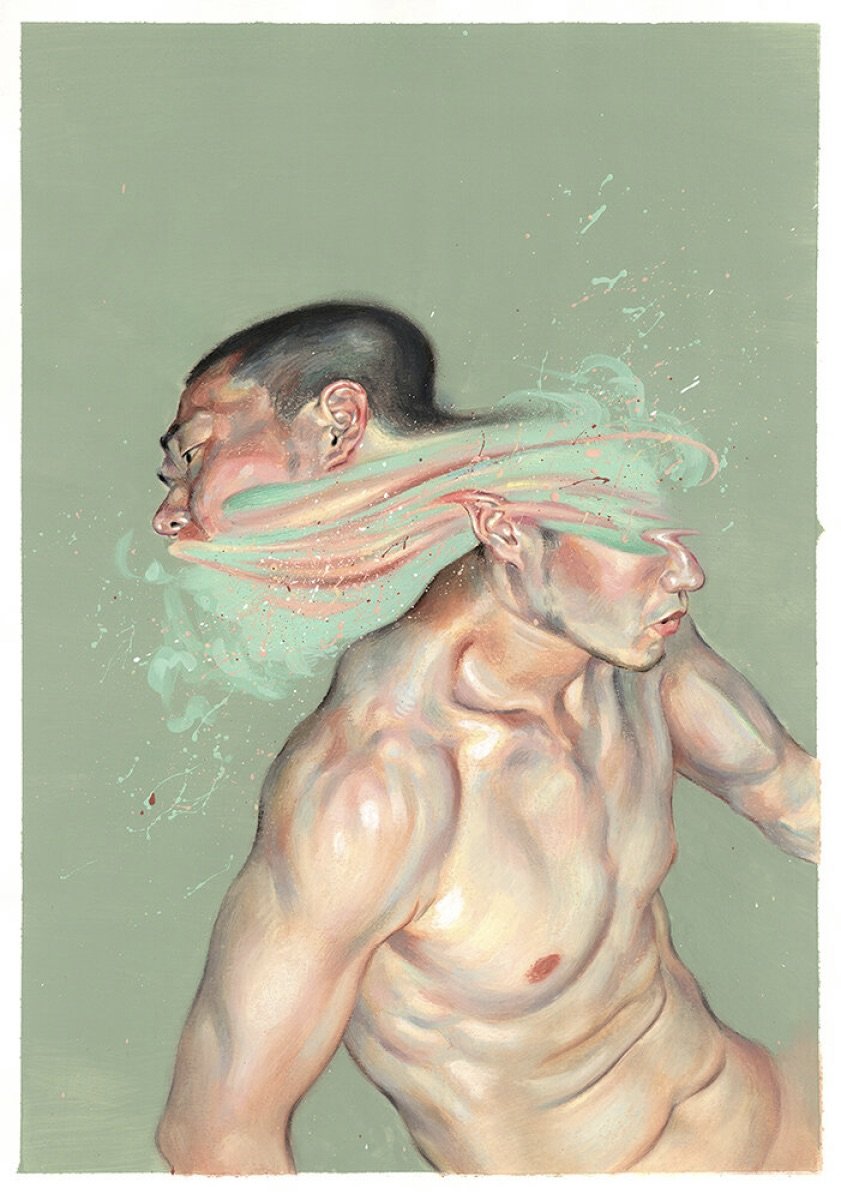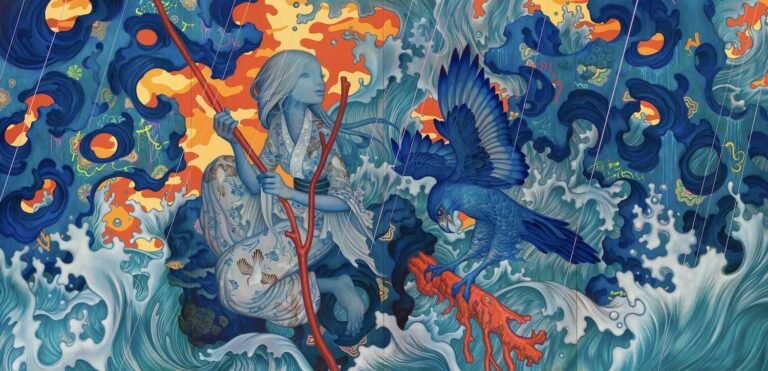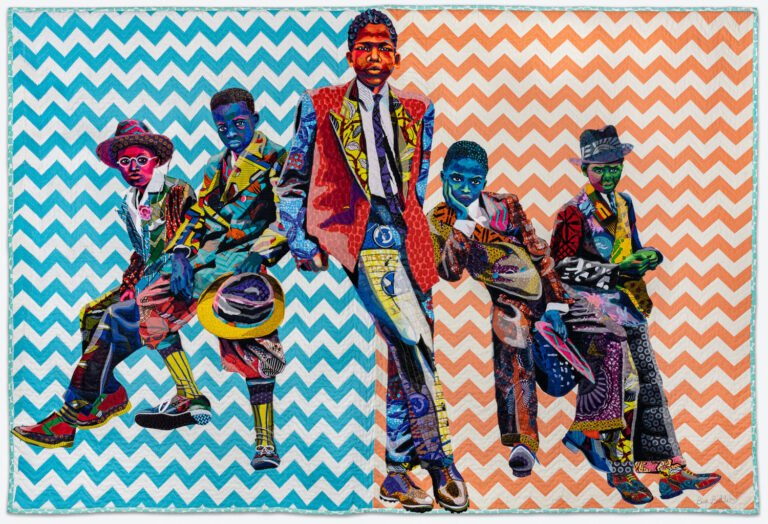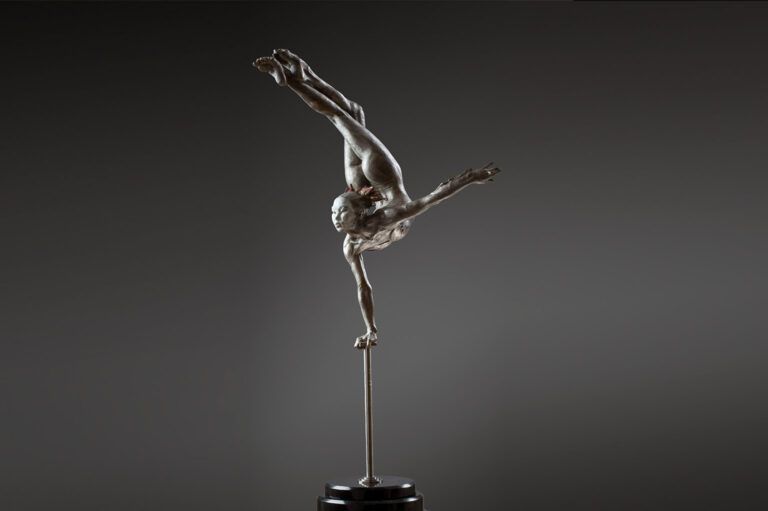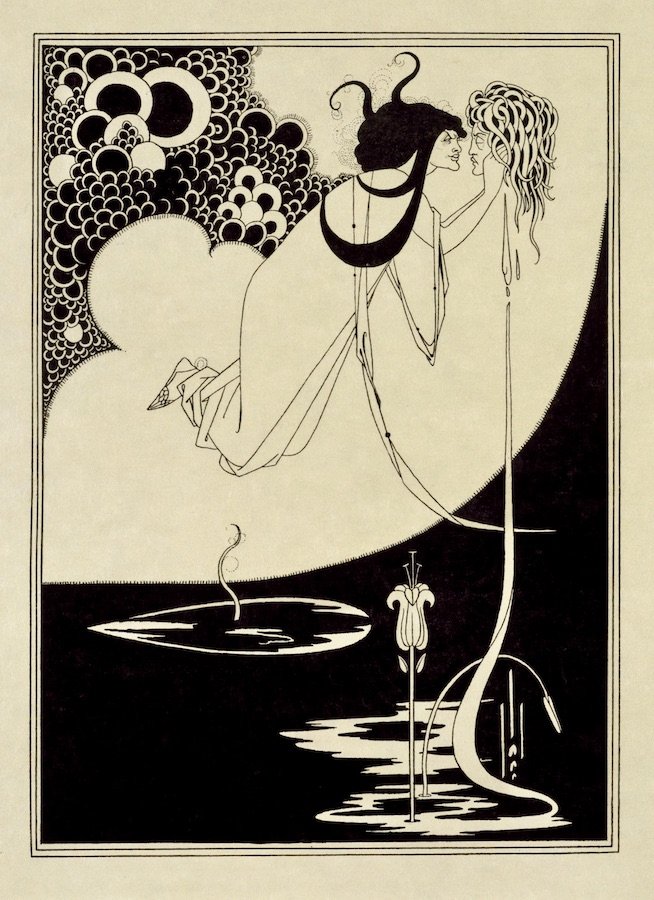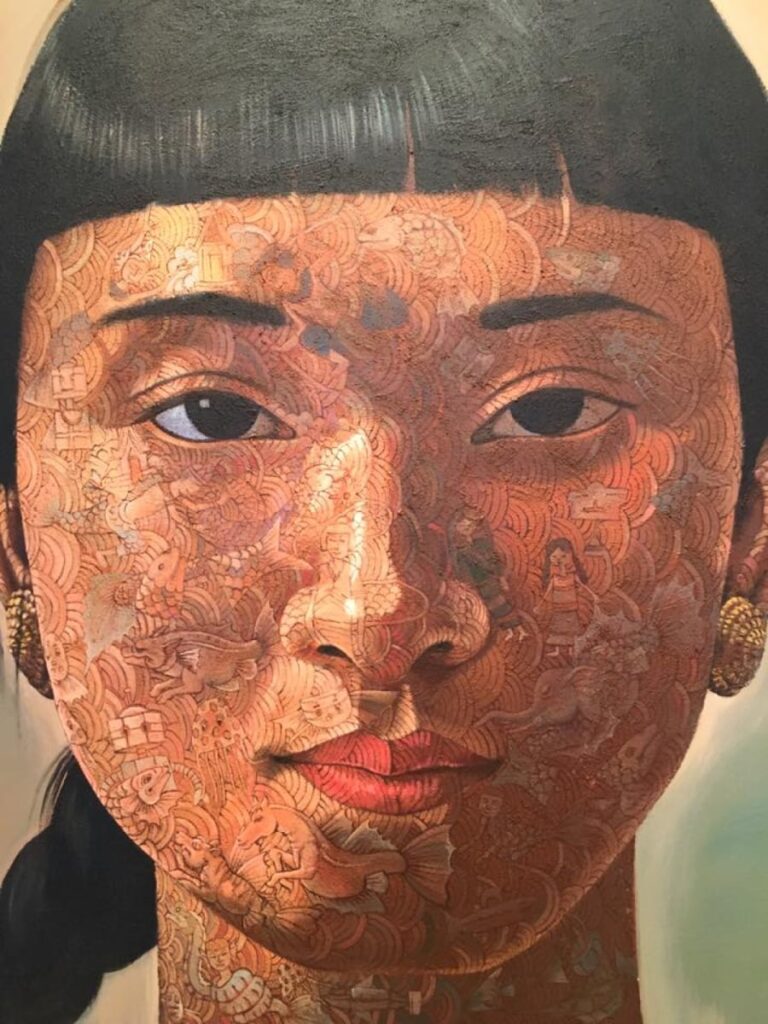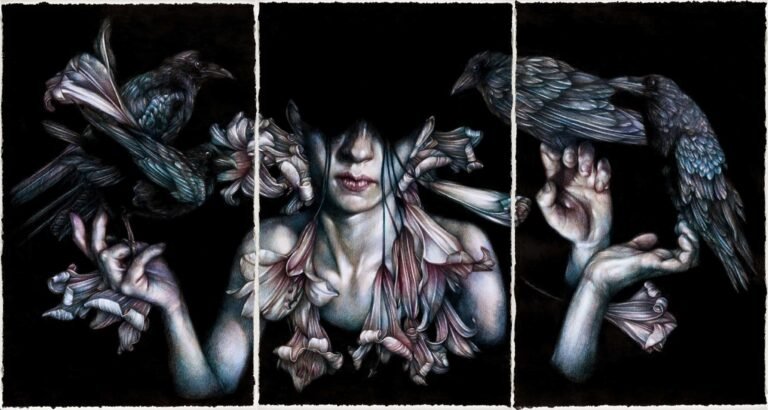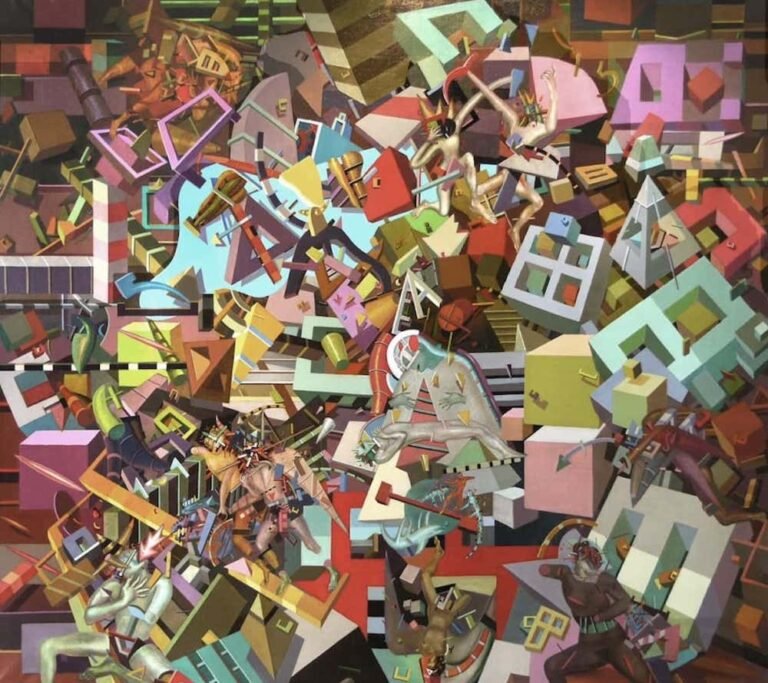WanJin Kim’s art seeks to convey the human spirit through the expressiveness of gestures; the way someone tiptoes as they walk, how a finger reaches out tentatively. It’s also a mark of an artist’s skill to be able to sketch hands and feet so realistically, for its said that even the great masters struggled with them, but WanJin’s art is almost medically illustrative – understanding the pull of the ligaments and muscles, to the detailing of flesh tones, pressure points, and the blood vessels that lie so close to the surface.
WanJin’s art focuses on the individual, and often away from the construct of the face, discovering a person’s soul when it’s apart from the outer layers we present to the world. When WanJin does show the models’ portraits; their faces are twisted, pulled away from, interrupted, or cut off by the compositional framing and thus stopping you from seeing the individual in the traditional manner, and instead taking you to seeing their inner emotions; Remanent Head No.1 (2016) the face is torn in half suggesting an inner state of dissociation – a pulling away of two parts.
WanJin’s abstract realism is at times sensuous, telling of the intimate relationships we crave; In Karma No. 4 (2016) – a need for comfort, but also a sense of control. Another reason WanJin possibly focuses on the hands is that there are more sensory nerves here than anywhere else in the body; experiencing everything through touch.
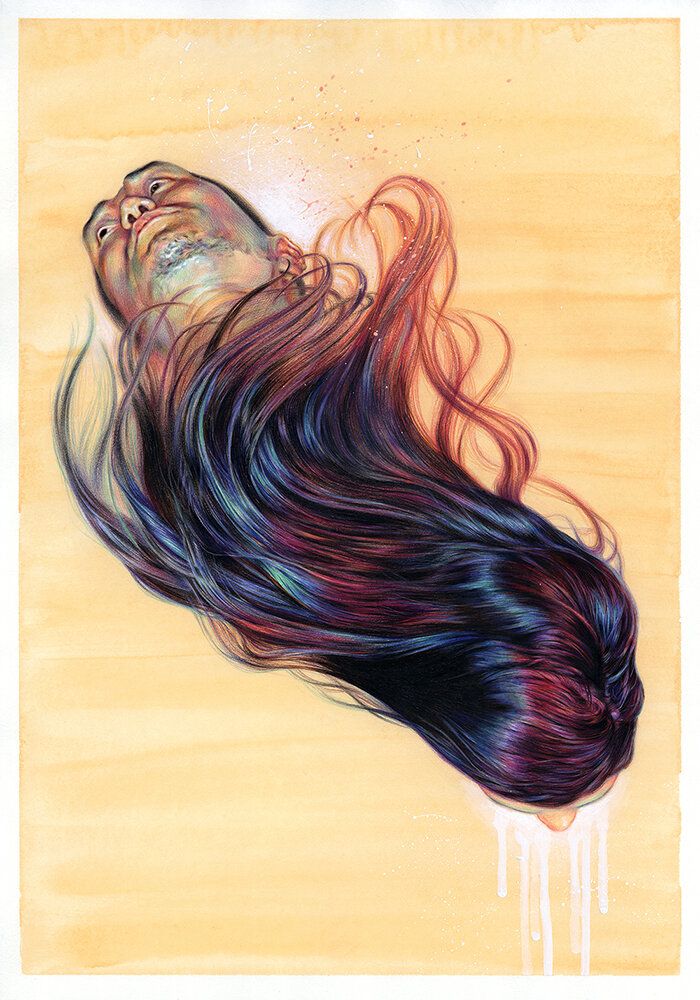 In Karma No.4, 2016, Coloured Pencil and Watercolour on Paper. WanJin Kim.
In Karma No.4, 2016, Coloured Pencil and Watercolour on Paper. WanJin Kim.
In WanJin’s study of the human form there is a note of the Lucian Freud; on the skin, in the block lines of colour and a similarity of strokes, but its only skin-deep for WanJin has his own distinctiveness that sets him apart. In recent years having turned more to the possibilities of the body, capturing it in its entirety whilst still turning away from a focus on the face, and instead maintaining it on the body’s movements; a shield of self-protection, of jumping, of its capability, and in his rendering of unusual poses of yoga; an association not just with the strengthening of the physical, but the meta-physical – the soul.
There’s also a use of space in WanJin’s work, forming the question of what exists around the body? The blank margins used in exploration of the model, and through this an encapsulation of their energy and essence by extending the lines of colour from their skin, into swirls that dissipate when entering the ether – A Man Standing Up (2018). Visually captivating, the emotiveness of WanJin’s art is like a dance with our own nature, and thus leaves you in a state of meditative reflection.
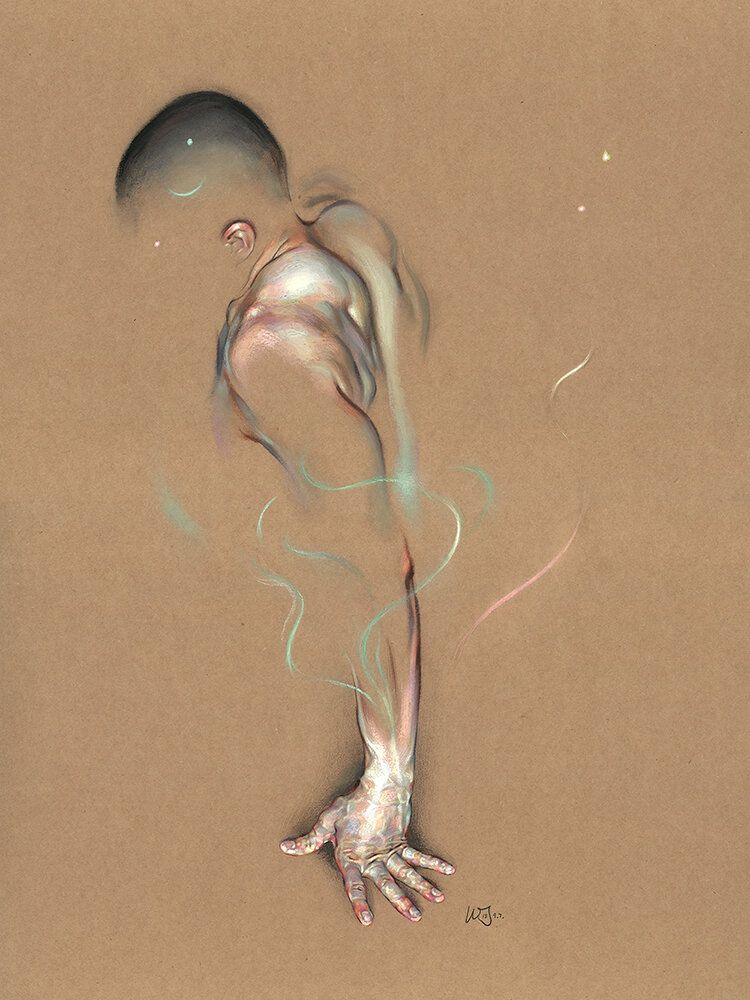 A Man Standing Up, 2018, Coloured Pencil and Oil Pastel on Kraft Board. WanJin Kim.
A Man Standing Up, 2018, Coloured Pencil and Oil Pastel on Kraft Board. WanJin Kim.

